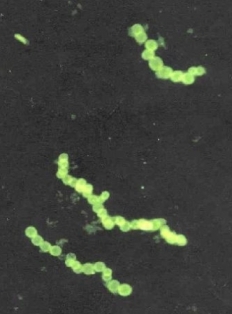Bacteria the Size of a Whale?
Genesis 1:20
“And God said, Let the waters bring forth abundantly the moving creature that hath life, and fowl that may fly above the earth in the open firmament of heaven.”
The abundance and variety of living things that God made continues to amaze scientists. All of us learned in school that bacteria are too small to see without a microscope. That’s why, when scientists studied a newly discovered type of bacteria that is visible to the naked eye, they couldn’t believe it was bacteria! More study convinced them that the sulfur pearl of Namibia is indeed the largest known bacteria.
 The sulfur pearl of Namibia was discovered in deep-sea sediments in 1997. It is part of a strange family of bacteria that generates energy for life by oxidizing sulfur. Such bacteria had been found earlier in sediments found off the South American coast, but they are nowhere near the size of the sulfur pearl. Not only does the sulfur pearl need no light to live, but also it is an excellent reflector of light, which makes it easy to see. The sulfur pearl is so large that smaller bacteria colonize its outer sheath. To give some idea, if the average bacteria were the size of a mouse, the sulfur pearl would be the size of a great blue whale, the largest animal on earth! It is, in fact, about as big as a pinhead.
The sulfur pearl of Namibia was discovered in deep-sea sediments in 1997. It is part of a strange family of bacteria that generates energy for life by oxidizing sulfur. Such bacteria had been found earlier in sediments found off the South American coast, but they are nowhere near the size of the sulfur pearl. Not only does the sulfur pearl need no light to live, but also it is an excellent reflector of light, which makes it easy to see. The sulfur pearl is so large that smaller bacteria colonize its outer sheath. To give some idea, if the average bacteria were the size of a mouse, the sulfur pearl would be the size of a great blue whale, the largest animal on earth! It is, in fact, about as big as a pinhead.
Despite its great size, it has no more cytoplasm than the average bacteria. About 98 percent of the bacterium’s interior is taken up by a fluid filled sack in which the bacterium stores nitrates which it uses to metabolize sulfur. This allows it to go for months without finding new nitrates. God has generously – and creatively – provided for all His creatures, even this bacterium.
Prayer:
Dear Father, we thank You for the variety and creativity with which You have provided for all Your creatures. Amen.
Notes:
S. Milius, “Digging bait worms reduces birds’ food,” Science News, April 17, 1999, v. 155, p. 246. Photo: Stained microphotograph of Thiomargarita namibiensis bacteria (Sulfur pearl of Namibia).